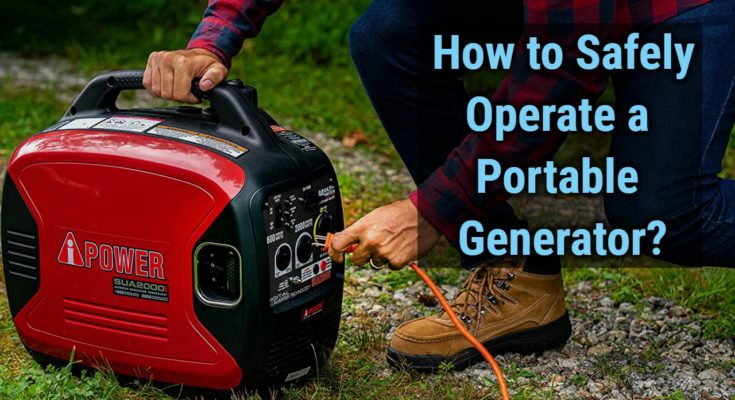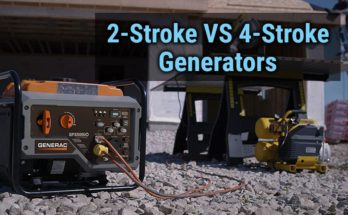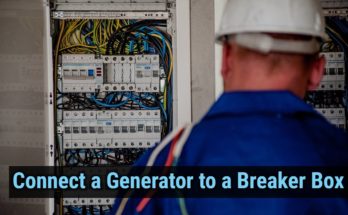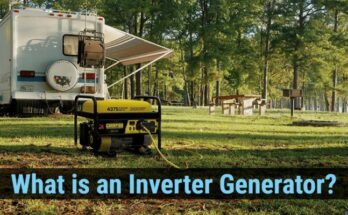A portable generator is a very comfortable and easy-to-use outdoor power equipment tool, and it can come in very handy during emergencies in a power cut.
A power cut can be frequent in disaster-prone areas, and power outages can last from a few hours to few days. During this period, a big portable generator can keep your fridge and heater running, keeping you and your family in comfort. A small portable generator can power few essentials only, and it is very helpful if the power outage doesn’t last for more than a few hours. On a camping trip, it can power your electronics like a laptop, mobiles, and cameras.
Besides, a portable generator can power your RV and power tools at the job site. If you have made up your mind to buy a portable generator, you must know how to operate and maintain it safely. If you don’t have the basic knowledge about the safe operation of portable generators, it can lead to an accident; sometimes very serious accidents.
In this article, we explain how you can avoid those accidents by safely operating a portable generator.
Table of Contents
Don’t ever Directly Connect the Generator into the Household Plug
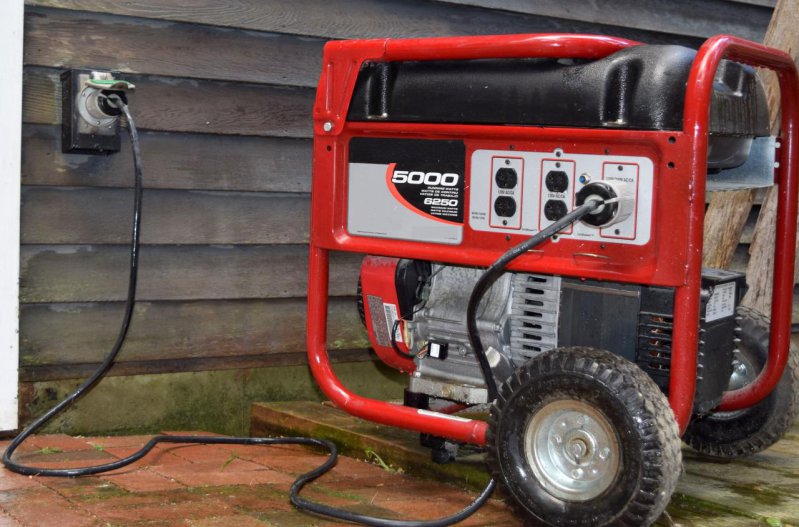
When a generator is directly connected to the house plug, it back feeds the energy. As the utility supply lines are not disconnected from the house, this energy travels through the lines. A line on which some electrician may be working to restore the electricity by assuming that the line is unenergized. This can result in the electrocution of a worker, and this can be deadly sometimes. So, it is of utmost importance that you never connect your generator directly to the house.
If you are fed up with all the cords running around your house, then invest in a good double or triple pole transfer switch. A transfer switch disconnects the electrical grid when you connect the generator. The installation of the transfer switch should be done by a professional electrician, and it is not a DIY job. Moreover, the electrical code requires you to have the transfer switch to connect the generator to the house.
Consider the Wattage Requirement
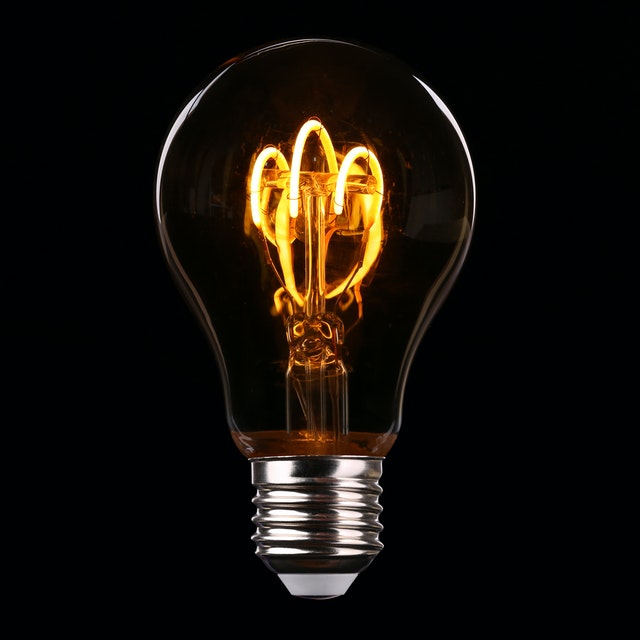
The ability of the portable generator to power the electrical equipment is measured in terms of wattage. The more wattage the generator has, the more appliances it can power simultaneously. It is the maximum wattage of a portable generator.
Suppose a generator has a wattage rating of 3500 watts. This means it can provide a maximum of 3500 watts of power. With this power, you can run a small refrigerator, an oven may be, and few other small appliances concurrently. The total wattage is spread between a few different appliances.
If the generator is overloaded with a load more than its capacity, then the current drawn will be much more, it can melt the cables, this can lead to electrocution or fire hazard. To avoid this, you should know your wattage requirement beforehand. It is best to consult an electrician if you don’t know how to select the proper wattage of a generator rather than having a small or big portable generator for your needs.
Placement of a Generator
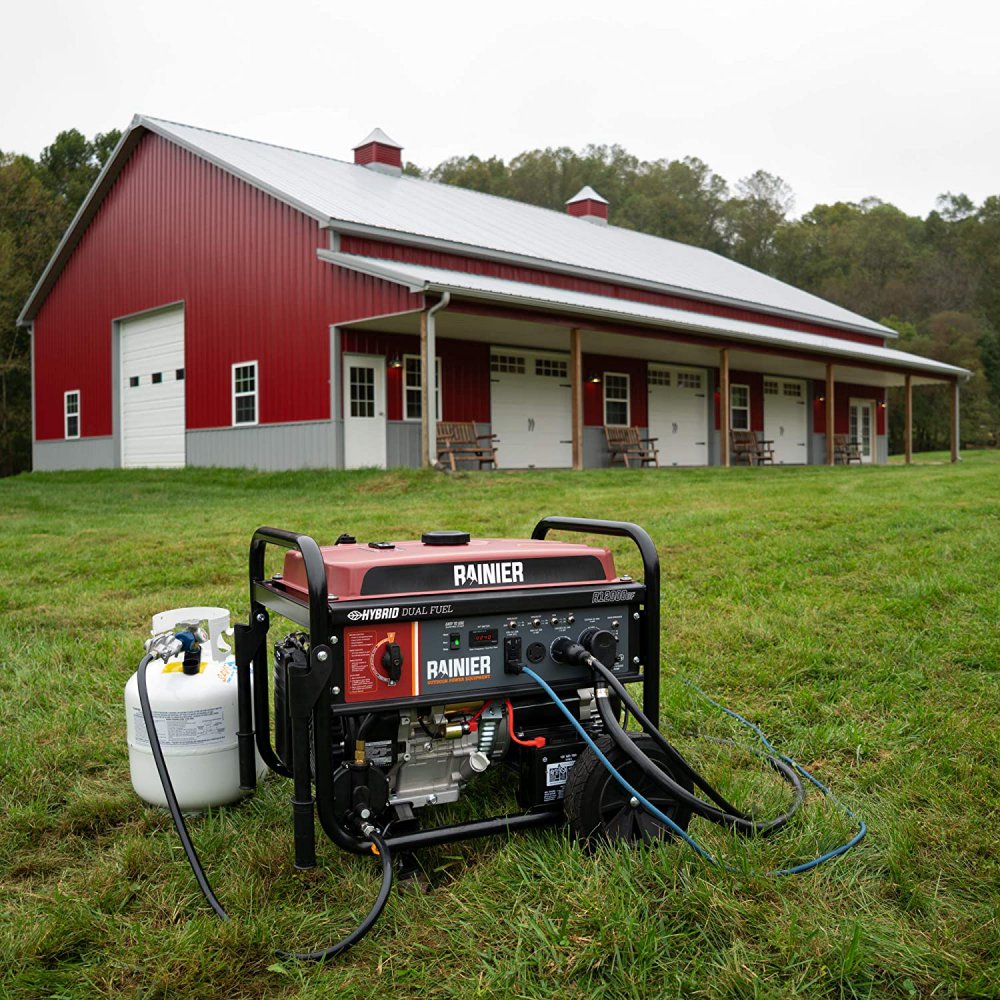
To keep you and your family safe, a generator should always be placed in an open space, not even near to the house, let alone inside. The generator, which runs on gasoline and, same as every other gasoline engine, produces carbon monoxide, which is colorless, odorless, and tasteless. It is lethal if it accumulates up to a large volume. To avoid this accumulation, don’t keep your generator in a garage or basement or under any shed.
It is also advisable to keep the exhaust pipe pointing away from the house, so gases, by any chance, don’t creep inside the house. Another thing to note, you can have the generator with the built-in CO detectors. It shuts off the generator before the accumulation reaches a dangerous level. Also, you can install them separately. This problem isn’t there in battery-powered or solar generators.
Use of GFCI Transfer Switch with GFCI outlets
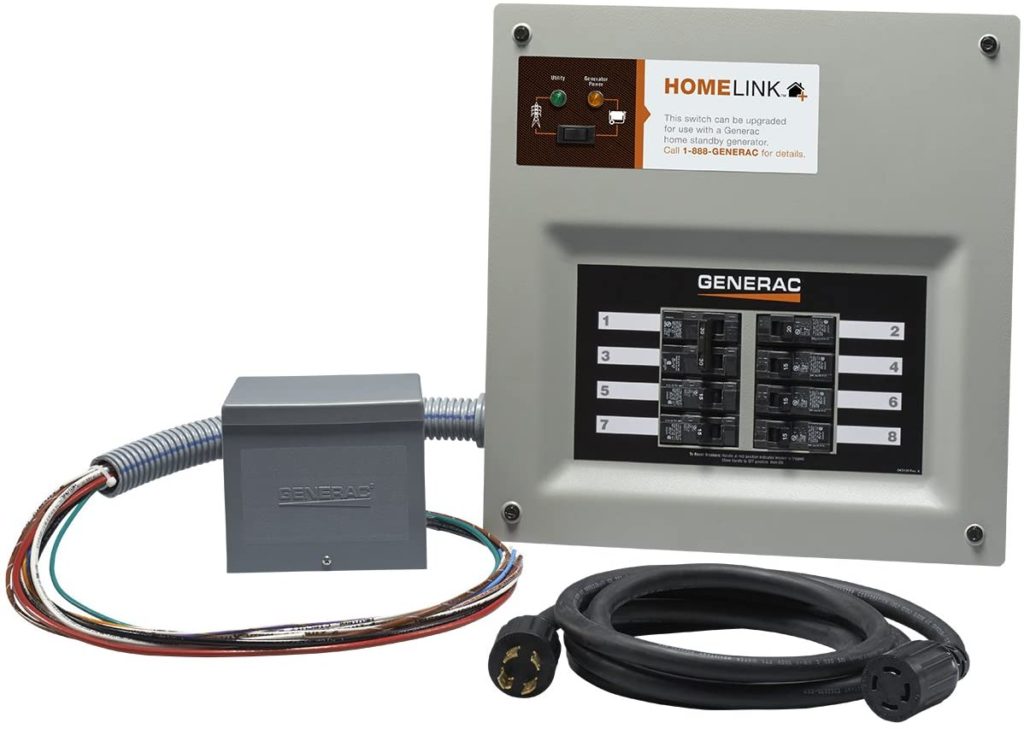
A GFCI is an acronym for Ground Fault Circuit Interrupter; this system prevents electrocution as soon as it detects that a person is exposed to electricity. It turns off the power before any harm has been done. If your generator has GFCI protection, then the GFCI transfer switch should be used for the connection to the house; this is required by NEC.
GFCI outlets are mainly offered on generators that can toggle the voltages from 120 V to 240 V and Vice versa. To have a GFCI outlet on dual-voltage generators is a requirement of an NEC. The difference between the regular transfer switch and GFCI transfer is the extra pole; a GFCI transfer switch disconnects the two 120 voltage circuits from the utility, but furthermore, it also disconnects the neutral from the circuit.
This is important because if this third leg stays connected, then the GFCI outlets won’t work properly; they will trip off. If you use a 2-pole or any other common transfer switch with the GFCI outlets, then you are not following the electrical codes. Simple transfer switches can be used for every other generator which doesn’t have GFCI outlets, but a GFCI is a must for a GFCI generator.
Test Run
A test run is important, and it tells you that your generator will work flawlessly in an emergency or a power outage condition, or on the contrary, it won’t. If it doesn’t work properly, then you can find the faults and correct them, so that when the time comes, everything is ready and the generator will work as it should.
So, it is a good idea to run the generator before any actual needs, you should do the advised number of dry runs, so if there are any faults, it can be found out in advance. If you don’t use your generator regularly, then it is beneficial to start doing a few minutes run now and then; this will ensure its proper functioning. It is not a good idea to keep the generator out of operation for long periods. This is especially important for the gas generator, regular runs keep the part lubricated.
Another thing to keep in mind is not to store it just after the run. I mean, what’s the rush? Let it have some time to cool down. They get hot when they run for some time.
Connect Appliances One by One
It is a good practice to connect all the appliances you want to power one by one, and you can’t just shove in all pins at once. This can overload the generator. It is possible to run a few appliances simultaneously on a generator, but it may not be possible to start them at the same time. This is because of their starting watts.
Their combined starting watts can increase beyond the generator capacity. If that happens, modern generators won’t start. But their combined running watts stay within the limit, so they can be run together. Also, it is advisable to connect the high starting watts demanding appliances first, followed by the less starting watt demanding generators. The latest generators display on their panels actually how many watts your connected appliances are consuming.
Know When to Connect the Ground Rod

A ground rod is imperative to have, but it is important to know when to connect the ground rod. When the direct connection from the generator to the appliances is made through extension cords, you don’t need a ground rod. But if appliances are receiving the power through a transfer switch, then the generator needs to be grounded. To ground the generator, you can connect the generator’s grounding lug and the grounding rod with the copper wire of proper diameter.
What Problems Can You Face During the Test Run?
A test run is supposed to present you with problems. This way, if there are any, you can solve them before when you actually need the generator to power the appliances. A few of them are listed below with the cause and their remedies.
Tripping of GFCI Outlets
If you have a dual voltage generator, then it will have GFCI outlets. For their proper working, a GFCI or 3 poles switch is required. If GFCI outlets are tripping, then it means a GFCI transfer switch isn’t used, or there is a ground fault somewhere. A simple solution is to change the regular transfer switch with the GFCI transfer switch. If still, the problem persists, then there must be a ground fault somewhere in the electrical circuit. This needs to be found and fixed.
Tripped Breakers
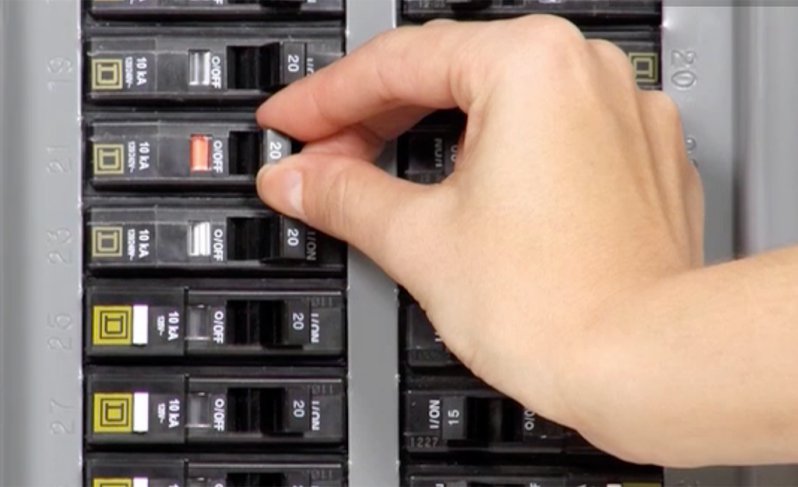
A breaker will trip when the power drawn from the generator is more than its capacity, in short, an overload. You may have connected too many appliances or one large appliance, and the generator doesn’t have enough power to run them all. This can be avoided if you connect the appliances one by one and know the number of appliances you can connect which matches the power limit of the generator.
For example, suppose you have connected a power-consuming washing machine along with other demanding appliances. So, what you can do is lose the few appliances so that the washing machine gets the full voltage it needs to properly operate. Running these appliances on a low voltage can damage them or reduce their lifetime. Also, note that some appliances with motors will draw 2 to 3 times their rated current for the initial few seconds.
Devices Don’t Start or Don’t Work Properly
When the device doesn’t work properly, then the issue lies with the quality of power supplied to it. We advise going for the generators which are well known for power reliability. Generator companies, which you may have never heard the name of, products may not supply that quality power. A red signal can be their lower price. The source of this problem cannot only be the poor quality generator, a transfer switch which is not properly installed can also cause these working issues. But the chances of that are less if it is done by a professional electrician.
Let’s take an example; you buy a generator that claims to provide 120 Volt of power. It is true, and it will provide the 120 V, but not consistently. This can damage your electronics if proper filtering circuits are not in place. The situation will deteriorate even more when more load is attached to it. So, again, buy the generators from reputed companies.

